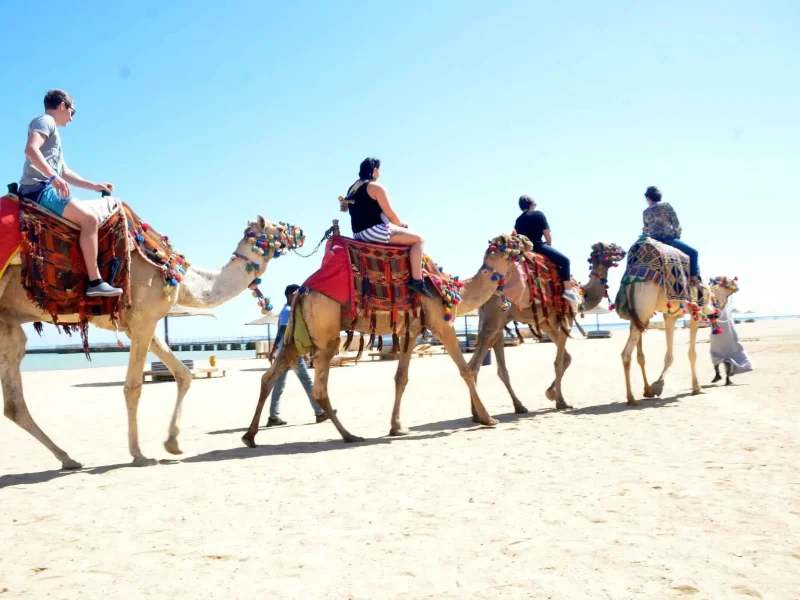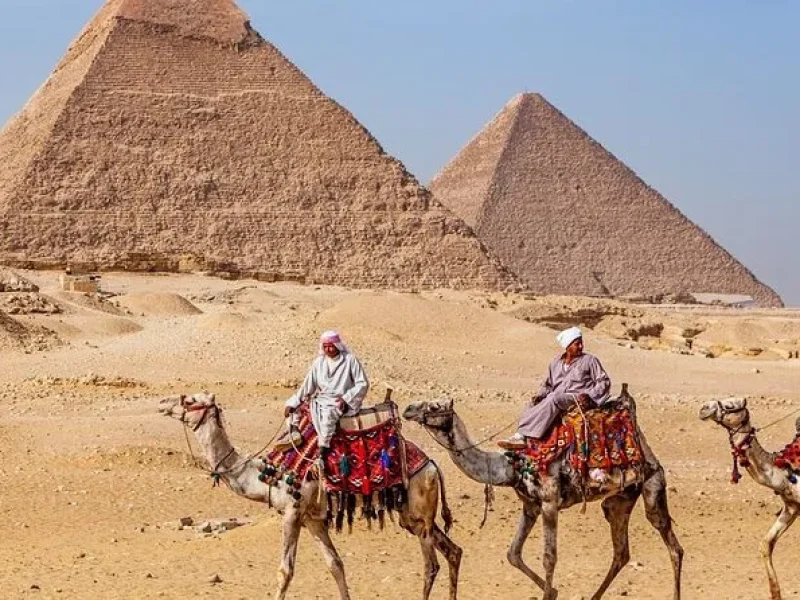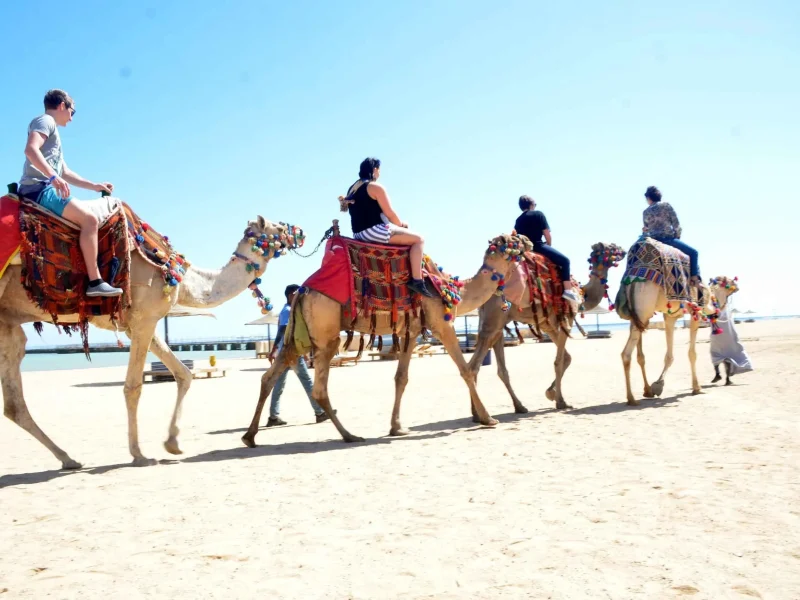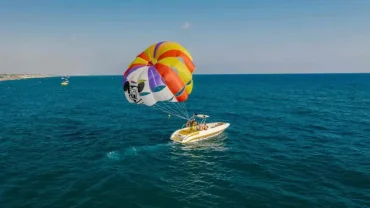Camel Ride in Egypt: 9 Reasons This Epic Desert Experience Will Blow Your Mind

Camel Ride in Egypt
When speed meets serenity and ancient tradition collides with modern thrill, the result is an unforgettable Camel Ride in Egypt. This hybrid adventure combines the exhilarating rush of quad biking across sun-scorched sands with the timeless elegance of riding a camel—a creature that’s been the desert’s companion for centuries.
In Egypt, you don’t just witness history—you ride through it. Whether you’re zooming across dunes under the golden light of the setting sun or swaying gently atop a camel beneath the open sky, this experience captures the heart of adventure travel. Add to it the welcoming warmth of Bedouin culture and you’ve got a desert escape like no other.
History of Camel Riding in Egypt
Camels have been a part of Egyptian life for over 3,000 years. In the time of the pharaohs, these “ships of the desert” were essential for trade and transport across vast arid regions. Their endurance, grace, and connection to ancient civilizations make camel riding more than just a novelty—it’s a cultural immersion.
As Egypt modernized and opened its arms to global tourism, camel rides transformed from utility to attraction. Yet, the spiritual connection remains intact. Today, tourists ride camels not just to tick a box but to feel a piece of ancient Egypt beneath them.

Rise of Quad Biking in Egypt’s Tourism Scene
The 2000s saw a boom in adventure tourism across Egypt, with quad biking emerging as a top contender. These all-terrain vehicles opened up vast desert regions previously inaccessible by car or foot. The attraction? Speed, control, and unfiltered access to raw desert beauty.
From the Sinai mountains to the Red Sea dunes, quads turned the desert into a massive playground for thrill-seekers. Tours often start with safety briefings, gear fitting, and a practice run before hitting the real trails.
Combining Camels: A Unique Package
What’s better than one iconic desert activity? Two. Tour operators in Egypt started offering combo packages that give travelers both a modern adrenaline-pumping ride and a cultural slow-paced journey in one neat experience.
The fusion works beautifully. You begin by tearing across the sand on a quad bike, then wind down with a tranquil camel ride to soak in the desert’s quiet grandeur. The contrast enhances both—like fire and water, intensity followed by peace.
Best Locations for a Camel Ride in Egypt
You’re spoiled for choice:
Hurghada: Offers expansive dunes and Red Sea vistas—perfect for sunset rides.
Sharm El-Sheikh: Known for Sinai mountain backdrops and Bedouin villages.
Luxor: Desert trails surrounded by ancient temples and historic sites.
Siwa Oasis: A bit remote, but the surreal beauty and cultural depth are unmatched.
Each destination brings something special. Whether it’s Red Sea magic or Pharaoh shadows, your ride becomes a story.

What to Expect from the Tour
Most tours begin mid-afternoon and last 3–4 hours. Expect:
Hotel pick-up and drop-off
Safety instructions and practice session
Quad ride through dunes or mountain trails
Camel ride to a Bedouin camp
Tea or light meal with the locals
Return ride under twilight skies
The desert changes color every hour, so you’ll witness nature’s palette unfold in real time.
Preparing for the Desert Ride
Essentials to bring:
Sunglasses: The sand and sun don’t play fair.
Scarf (keffiyeh): Often provided but handy to have your own.
Sturdy shoes: Closed-toe for quads; easy slip-ons for camel rides.
Sunscreen: The desert sun is relentless.
Water: Stay hydrated even if the air feels dry.
Safety Guidelines for Camel Rides
Safety first, always:
Helmets: Mandatory on quads. Ensure the chin strap is snug.
Animal ethics: Choose operators who treat their camels well. Avoid tours that overburden or mistreat animals.
Weather: Don’t ride in sandstorms or extreme midday heat.
A well-run tour balances excitement with comfort and caution.
Booking the Right Tour Operator
Key tips:
Check reviews: Look beyond stars. Read real user experiences.
Ask about group size: Smaller = better experience.
Verify inclusions: Meals, gear, transportation, guide language.
Good operators focus on guest comfort, safety, and the cultural value of the experience.
Cost of a Camel Ride in Egypt
Expect to pay between $35–$80 USD per person, depending on:
Duration of tour
Add-ons (private guide, meal upgrades)
Group size
Location (Sinai may cost more than Luxor)
Often, the price includes transfers, refreshments, and sometimes even photos.
Ideal Time of Day for the Ride
Sunrise: Cool temps, glowing skies, fewer crowds.
Sunset: Best lighting for photos, romantic ambiance.
Midday: Avoid unless well-shaded—intense heat can sap energy fast.
Golden hour? That’s your sweet spot.
Best Season to Enjoy the Desert Ride
Egypt is hot year-round, but October through April offers more comfortable daytime temps. Avoid June–August unless you love extreme heat.
Winter rides may require a light jacket post-sunset, as desert temps drop quickly.
Camel Riding Tips for First-Timers
Hold on tight during mounting/dismounting.
Keep your back straight.
Relax—your camel knows the way.
The rocking motion is natural—embrace it and enjoy the sway.
Cultural Significance of Camels in Egypt
Camels symbolize endurance, wisdom, and survival in Egyptian and Arab folklore. They’ve been trusted companions for centuries and remain an icon of nomadic life.
Your ride isn’t just a photo-op—it’s a nod to a deep cultural lineage.
Photography Opportunities on the Ride
Desert silhouettes during sunset.
Camel and quad tracks weaving across dunes.
Wide-angle shots of you mid-ride.
Use landscape mode and shoot toward the sun for dramatic effects.
Dining in the Desert Experience
Many tours end with:
Fresh flatbread
Grilled meats or veggies
Spiced rice
Sweet Bedouin tea or hibiscus juice
Don’t expect fancy—but the flavors are honest, hearty, and deeply Egyptian.
Meeting the Bedouins
You’ll meet Bedouins who still live in the desert. They often:
Share traditional stories
Demonstrate crafts or herbal remedies
Offer insight into their unique desert life
Respect and curiosity go a long way in building this beautiful cross-cultural exchange.
Environmental and Animal Ethics
Avoid littering—deserts are fragile ecosystems.
Don’t feed camels random snacks.
Choose operators who follow animal welfare rules and pay their staff fairly.
Sustainable tourism keeps this adventure alive for future generations.
Group vs. Private Desert Tours
Group tours: Cheaper, social, sometimes crowded.
Private tours: Pricier but tailored—perfect for couples or photographers.
Decide based on your vibe. For intimate moments, private wins.
Family-Friendly Quad Camel Ride Options
Some tours offer:
Tandem quads for kids
Gentle camel walks
Shorter timeframes
Ask ahead—some operators specialize in kid-safe options with child harnesses and guides.
Weather Challenges and How to Prepare
Sandstorms: Goggles + scarf
High heat: Hydrate constantly
Chill evenings: Light jacket or shawl
Check the forecast the day before. The desert can be surprisingly unpredictable.
Camel Ride for Adventurers vs. Relaxers
Adventurers might crave speed, technical trails, or sunrise adrenaline rushes.
Relaxers? Opt for slow-paced rides, shorter durations, and more cultural stops like tea tents or campfire storytelling.
Frequently Asked Questions About Camel Ride in Egypt
Is the ride suitable for children?
Yes—many tours cater to families, but check the age/weight limits.
Do I need prior experience?
None! Both activities are beginner-friendly with clear instructions.
How long does the full tour last?
Typically 3–4 hours, including breaks and meals.
What’s the best time of year?
October to April for mild weather and clearer skies.
Do I need travel insurance?
Highly recommended, especially for adventure activities.
What if I’m scared of camels?
You can skip that part or ask for a shorter ride—guides are accommodating.
Conclusion
A Camel Ride in Egypt isn’t just another tourist activity—it’s a symphony of thrill and tradition. You get the chance to blaze your own trail across vast dunes, feel the rhythm of the past on camelback, and engage with an ancient culture that continues to thrive.




Comment (0)